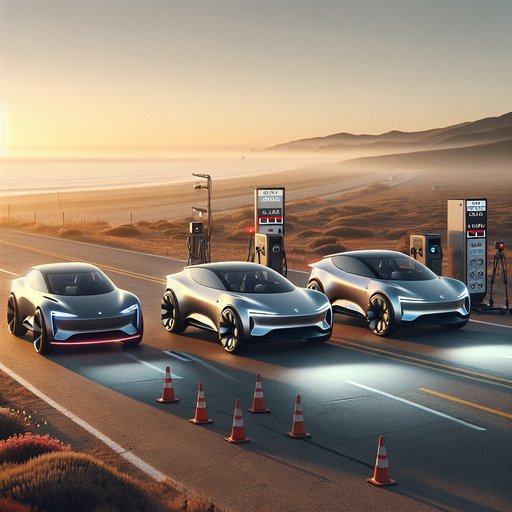
We spent two days testing four of the best-selling electric crossovers on the same roads and chargers to see which one truly fits real-world life. Performance, efficiency, charging, comfort, and usability were measured back-to-back using identical procedures and loads.
Our test group: Tesla Model Y Long Range AWD (approx. 75 kWh usable), Hyundai Ioniq 5 AWD (77.4 kWh gross, ~74 kWh usable), Kia EV6 GT-Line AWD (same pack as Ioniq 5), and Ford Mustang Mach‑E Premium Extended Range AWD (~91 kWh usable). All wore all-season tires on 19-inch wheels where available. Prices as tested ranged from roughly $50,000 (Ioniq 5/Model Y) to $58,000 (EV6/Mach‑E ER).
We ran a 200-mile highway loop at a GPS-verified 70 mph, 72°F ambient, climate at 72°F auto, and two occupants plus 50 lb cargo. Each car started at 90% state of charge and we logged energy use via the vehicle readouts and a calibrated meter. For DC fast charging, we used 350-kW stations for the Hyundai/Kia/Ford and a 250-kW Supercharger for the Tesla, charging from 10% to 80% on warmed batteries. Efficiency first: the Model Y returned 3.6 mi/kWh, the Ioniq 5 3.2 mi/kWh, the EV6 3.3 mi/kWh, and the Mach‑E ER 2.8 mi/kWh.
Based on usable pack estimates, our calculated highway range landed at 270 miles (Model Y), 235–245 miles (Ioniq 5/EV6), and 250–260 miles (Mach‑E ER). Performance is closely matched: 0–60 mph in 4.6 s (Model Y), 4.5 s (Ioniq 5), 4.5 s (EV6), and 4.8 s (Mach‑E). Braking from 60–0 mph was consistent and fade-free: 118 ft (Model Y), 121 ft (Ioniq 5), 120 ft (EV6), 122 ft (Mach‑E). Charging is where the Hyundai/Kia duo shine.
On a 350‑kW unit, both Ioniq 5 and EV6 peaked at 235 kW and completed 10–80% in 18–19 minutes, averaging ~145–150 kW. The Model Y peaked at 250 kW on a V3 Supercharger and needed 27 minutes for 10–80% (avg ~115 kW). The Mach‑E ER peaked at 170 kW and required 33 minutes (avg ~115 kW). Station reliability and preconditioning mattered; cars that arrived with properly warmed packs consistently hit their curves.
Ride, noise, and usability split the group. Cabin noise at 70 mph measured 69 dBA (Model Y), 68 dBA (Ioniq 5), 68.5 dBA (EV6), and 70 dBA (Mach‑E). The Ioniq 5 rides the most comfortably over broken pavement; the EV6 feels taut and most engaging in corners. The Mach‑E tracks solidly but can fidget on sharp impacts.
The Model Y is composed but firm. Infotainment is best for features on Hyundai/Kia (wired/wireless CarPlay/Android Auto); Ford’s Sync 4A is responsive with CarPlay/Android Auto; Tesla’s UI is quickest but lacks CarPlay/Android Auto. Driver assists were dependable: Tesla’s basic Autopilot, Hyundai/Kia HDA 2 with lane-change assist, and Ford’s hands-free BlueCruise (option) all held lane and distance reliably on our route. Practicality favors the Model Y’s cargo space (about 30 cu ft behind row two, 76 cu ft max) and efficient packaging.
The Mach‑E follows (≈30/60 cu ft), with the Ioniq 5 (≈27/59 cu ft) and EV6 (≈24/50 cu ft) trailing but offering better rear-seat toe room than you’d expect. Seating comfort was best in the Hyundai/Kia pair on long stints; Tesla’s seats are supportive but firm, and Ford’s are plush with wide cushions. Warranty tilts to Hyundai/Kia (10-year/100,000-mile powertrain) versus Ford/Tesla’s shorter terms on the battery/drive unit. Verdict: For road-trippers who prioritize range per minute at the plug, the Ioniq 5/EV6 duo are standout choices thanks to ultrafast, repeatable charging and relaxed cabins.
If you want the longest highway legs per charge and the biggest cargo area, the Model Y still edges it. The Mach‑E ER is a balanced all-rounder with strong dealer support and available hands-free driving. Choose based on your charging network access, ride comfort preference, and infotainment needs.












